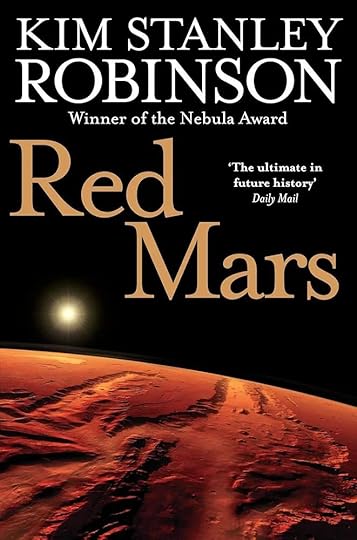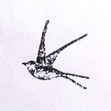Review/Ramble – Red Mars, Green Mars, Blue Mars
It may seem to you, dear readers, that I’ve been on a bit of a Mars kick for a while now, what with Great Martian Railways coming out and the many rambling posts I’ve made about it and related Stuff About Space. But there is another reason for this mild obsession, and its name is Kim Stanley Robinson.
Ok, its name is actually the Mars Trilogy: Red Mars, Green Mars, Blue Mars; three absolute doorstops of books that cover, in detail, a colonisation and terraforming of Mars over the course of centuries. This trilogy is unquestionably epic, in all senses of the word. From their landing on the Red Planet to their first settlements, to building space elevators, full multi-national colonisation and the ensuing wars between these Earthly interlopers and the descendants of the older settlers – the first native Martians – the story of Robinson’s Mars is incredible in scope.

It is simultaneously multi-generational, taking place over centuries, and not, thanks to convenient immortality treatments that arise by the end of book 1, which means we get to experience Mars through both the eyes of those born into it, newly arrived outsiders, and those First Hundred, the original, immortal settlers who see Mars change from its barren state into a world fit for humanity… or not. This is a really interesting POV approach, honestly – a bit best of both worlds in how it showcases the changing attitudes towards a changing planet. And Robinson even squeezes in a bit of ‘the impact of immortality on an ordinary human brain’ just to cap things off nicely.
These are dense books. A dozen or more POV characters, each with their own chunks of narrative – though only switching after big sections, and always interacting with the other characters along the way, so nobody feels isolated and everyone gets room to breathe and explore their viewpoint. Almost too much room, sometimes – it does lead to long sections where the more interesting plot points get parked as characters explore other aspects of Martian life – but almost invariably I then find myself annoyed as I’m torn away from their story to jump to another thread.

But the density is what makes these books so impressive, honestly – because Robinson has thought of everything. I really mean that. Though advanced tech gets things off the ground a bit quicker, every development in habitation, in terraforming, in technology, is meticulously explored. Because there are so many characters with so many specialisms we jump from intense microbiology to advanced materials science in the blink of an eye, and every aspect phenomenally well researched. Seriously – Robinson is writing about nitrogen fixing, about weather patterns, about soil composition on another bloody planet and nailing it every time.
Just about the only thing he doesn’t cover in detail is public transport. There are trains, but how do they run? How were those rails laid? Checkmate, Robinson!
Seriously, though. The technical explanations and the level of detail can get a bit daunting, but these books may as well be a future documentary waiting to happen. The sheer vision needed to imagine a world in this much detail is only matched by the vision of Robinson’s characters as they build that world for themselves. If NASA appointed Kim Stanley Robinson the head of their Mars programme I would not bat an eyelid. In everything he writes, he seems to know more than anyone else alive.
And the politics. It’s not just the science of terraforming Mars, it’s the phenomenal insight into how humanity would actually react to this – how a changing world would treat the changing of another world. There are factions, there is rampant capitalism, there are climate crises and corrupt politicians, all frighteningly real, honestly. This is not a utopian vision of a new world – it is a very realistic look at how humanity will inevitably do its best to squander the opportunity that a new Mars would bring.

I haven’t actually finished Blue Mars yet – if I wait to write this post until then it’ll be weeks away, these are big books – but I am so immersed in how this story is playing out. I wonder just how he’s going to end it. All this time, all this work, and humanity is still just taking steps towards creating a Mars they can truly live on. It’s the kind of story that doesn’t really have an ultimate ending, because it is the future, or may as well be. And all the future does is keep on changing, forever just out of our reach.



